Extinct Australian Animals List
Contents
Australia is home to some of the world’s most unique wildlife — but sadly, many of these iconic species have already vanished forever. The Tasmanian Tiger, a striped carnivorous marsupial, was hunted to extinction by the 1920s. The Rustic Numbat disappeared in the 1960s, while the elegant Toolache Wallaby was lost in the 1930s due to overhunting. Even the vibrant Paradise Parrot, once common in eastern Australia, is now extinct due to habitat destruction and invasive predators.
Tasmanian Tiger
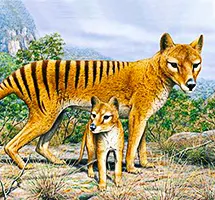
Tasmanian Tigers (Thylacine) were marsupial wolves that had stripes like a tiger. European settlers hunted this stunning animal to extinction in just 100 years. The last Tasmanian Tiger died of neglect in a zoo in 1936.
Read About the Tasmanian TigerDromornis stirtoni
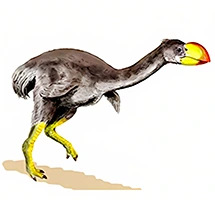
Also known as the Stilton's Thunder Bird, it was over 3m tall and weighed over 650kg. It was probably the largest, tallest, and heaviest bird that ever existed. They lived in subtropical open woodland until about 15 million years ago.
Stick Nest Rat
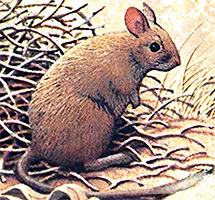
The white-tipped-stick-nest-rat or lesser stick-nest-rat lived in central Australia. It built its nest of sticks, which it added to over the years, making a massive mound up to 1 meter high and 3 meters long. last sighted in 1933. In 2016 it was declared as extinct
Read More About the Stick Nest RatToolache Wallaby
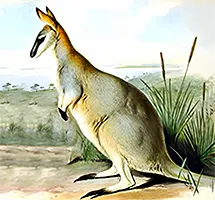
The toolache wallaby was slim and graceful and was 84cm in length. It became extinct in just 85 years because of habitat destruction, predators such as the red fox, hunting for sport and its beautiful pelt. The last wild sighting was in 1924, and the last captive individual died in 1939.
Bramble Cay melomys
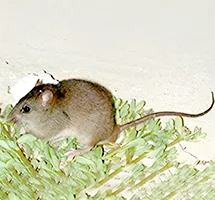
This rodent lived only on Bramble Cay, a coral cay of 4-5 hectares of unstable grassland located at the northern tip of the Great Barrier Reef. The cause of its extinction was sea-level rise as a consequence of global warming. It became extinct in 2015.
Genyornis newtoni
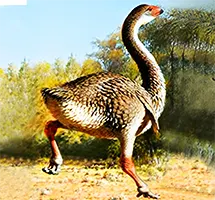
This bird was the last of the huge thunder birds. It was over 2m tall and weighed over 250kg. Its eggs weighed 1.6kg. These herbivorous birds lived in open forest and savannah-grasslands to as recent as 50,000 years ago, suggesting the native aboriginal people may have hunted them.
Rusty Numbat
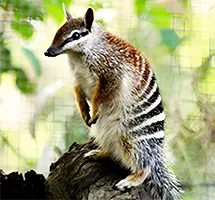
Rusty numbats were small marsupial anteaters that eat termites. They weigh between 400-700 grams and have a body length of between 20-27cm. They forage for termites during the daylight. They became extinct in the 1960s.
Read More About the Rusty NumbatTasmanian Emu
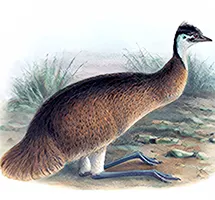
Tasmanian emus was slightly smaller than emus on the mainland. They were abundant on the island of Tasmania when European settlers arrived in 1803. They were hunted as pests and for food by white settlers who used guns and domestic dogs to chase them down. By 1850 they were extinct.
Megalania
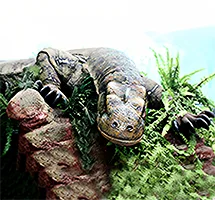
The Megalania (Varanus priscus) was a giant monitor lizard with toxin-secreting oral glands. It lived from about 2 million years ago to as recently as 23,000 years ago. It was the largest land lizard that ever existed being 7m long and weighing over 1,950kg. It may have been hunted to extinction by humans.
Australovenator
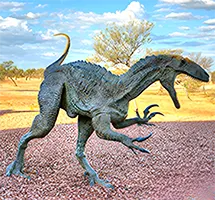
The Australovenator wintonensis was 1.6m tall and 5m in length. It had long, muscular legs, which made it agile and fast. It had small serrated teeth but, being a large, carnivorous megaraptor, it had three-fingered hands with large wickedly-curved claws with which to grab and tear open its prey. It lived 100–95 million years ago.
Diprotodon
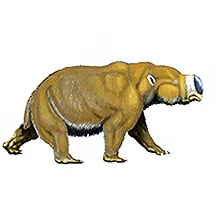
The diprotodon was the largest marsupial ever to exist. It resembled a giant wombat and was 3m long, 2m tall, and weighed 2,780 kg. It became extinct shortly after humans arrived in Australia.
Giant Echidna
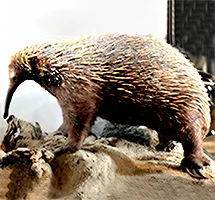
Zaglossus hacketti was a long-beaked echidna that was about 1m in length, 0.6m tall, and weighed 30kg. It was the largest monotreme known to have ever lived. Given its size, it probably didn't burrow and hide like modern-day echidnas and was probably hunted to extinction by early humans.
Marsupial Lion
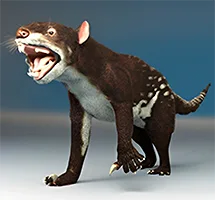
This was the largest carnivorous marsupial mammal that ever lived. It weighed 130kgs, was 71cm tall, and was about 114cm in length. It had strong forelimbs with enormous retractable claws. Its long muscular tail was similar to that of a kangaroo. Humans caused its extinction.
Tasman starling
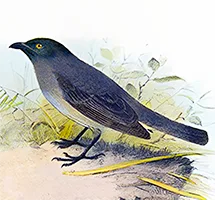
The Tasman starling became extinct in 1923 because of the introduction of black rats in 1918. Within two years, 40% of the island's native bird species were extinct. Other introduced animals such as cats, goats, and mongooses also played a part in the extinction of other birds on the island.
Red-fronted Parakeet
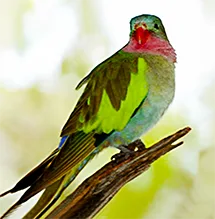
Red-fronted parakeets were quite common till about 1879. They became extinct because of hunting by sealers in the 19th century and as a result of the feral cat.
Minmi paravertebra
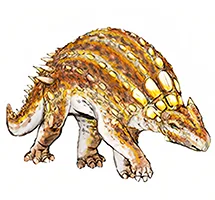
Minmi paravertebra was an ankylosaur, a quadrupedal herbivores dinosaur covered in bony armour to protect it from predators. It was 3m long and weighed 1,600kgs. It lived 133 to 100 million years ago.
Gastric-brooding Frog
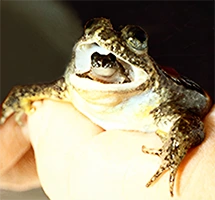
Gastric-brooding frogs incubated their babies in the mother's stomach and carried its babies in its mouth. They became extinct in the mid-1980s due to a pathogenic fungus introduced by humans.
Lesser Bilby
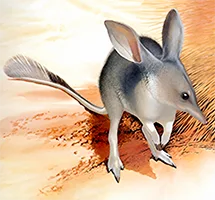
This small omnivorous marsupial became extinct in 1950 due to rabbits and introduced predators such as feral cats and foxes.
Read More About the Lesser BilbyDiamantinasaurus matildae
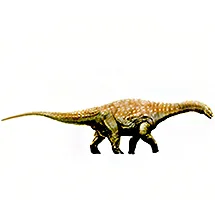
Diamantinasaurus was a herbivorous sauropod about 2.5–3m tall, 16m in length, weighing 20,000kg. It lived 100 to 89 million years ago.
Propleopus
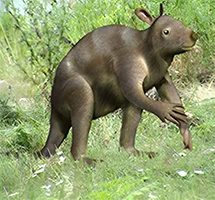
The propleopus oscillans was probably omnivorous, stood two metres high, and may have weighed about 70kg. It had teeth suitable for shearing meat. Whether it scavenged or hunted is not known.
grassland earless dragon
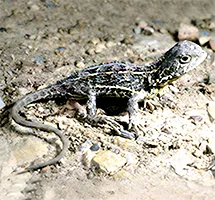
The Victorian grassland earless dragon was pale grey to reddish-brown agamid lizard about 5cm in length and weighed about 7g. It had no external ear and eardrum. This lizard probably became extinct due to the destruction of most of its habitat.
What is Extinction?
Extinction is the total disappearance of a living thing (plant or animal) from the planet. Forever! A clear example of extinction is the dinosaurs. They disappeared from the face of the Earth 65 million years ago. Over time, all species of living things our planet eventually become extinct and are usua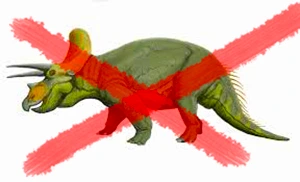 lly replaced by some other species. It is estimated that over 90% of all species of animals that ever lived since life began on the Earth are now extinct. This is a fundamental process of evolution.
lly replaced by some other species. It is estimated that over 90% of all species of animals that ever lived since life began on the Earth are now extinct. This is a fundamental process of evolution.
However, in recent times, humans have accelerated the extinction process and caused non-replacing extinction.
Types of Extinction
There are three types of extinction. Those that occur naturally as a part of evolution. Those that are caused by some cataclysmic event such as a meteor striking the earth, and human-induced extinction.
Cataclysmic or Mass Extinctions
During the history of the earth, there have been five mass extinctions, brought about by some catastrophic event such as the meteor that killed off the dinosaurs. These events are very rare. In-between these large-scale extinction events, there have been slow, inevitable natural extinctions of species.
Normal or Background Extinction
Ignoring periods of mass extinction, so as not to distort their estimates, scientists use fossil records to determine the number of distinct species existed in any given time and place, and then to identify which ones became extinct. By using these numbers, they can determine the rate at which extinctions usually take place. This is referred to as background extinction, or the normal extinction rate and is defines at the naturally occurring rate of extinction through time. This measure is used to differentiate the rates of extinction, which occur naturally from those caused by the impact of humans on the earth’s ecosystem.
Human Induced Extinction
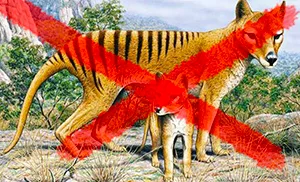
Photo: Tasmanian Tiger became extinct in 100 years
In recent times, due to human activities, the number of species becoming extinct has accelerated at an alarming rate. Some species have become extinct in just a few years. For example, since European settlement in Australia, 1788, about 100 animals are known to have gone extinct. That is approximately 1 every 2 years!
In Australia the Tasmanian tiger became extinct in just 100 years after. Similarly, in America, the passenger pigeon, which once numbered in the hundred of millions, became extinct in less than a hundred years because of indiscriminate hunting by European settlers.
Learn More About Australia's Incredibly Quirky Animals
Learn About Australia's Extinct Megafauna
All Rights Reserved. (Last Updated: Oct 23, 2025)